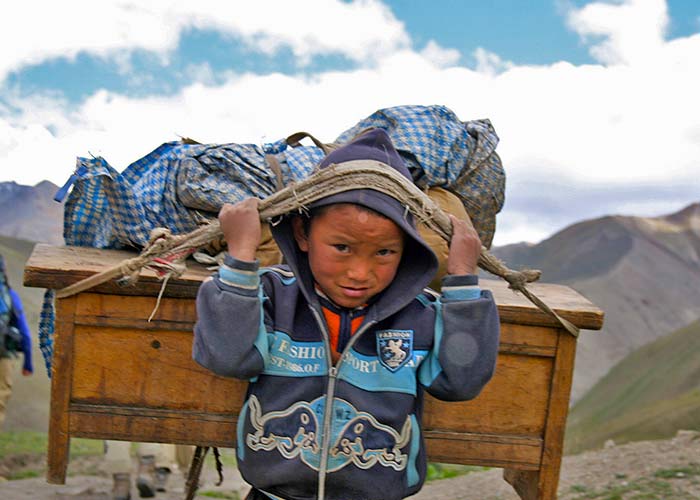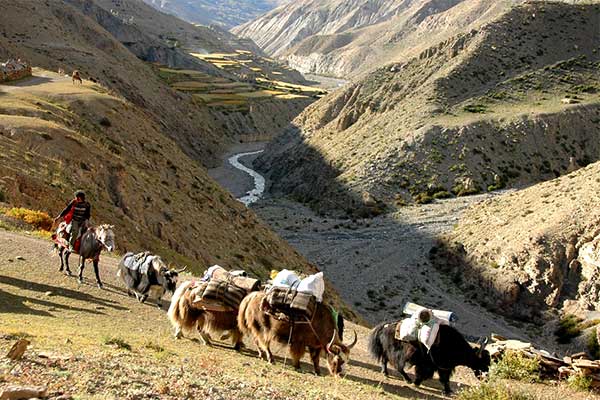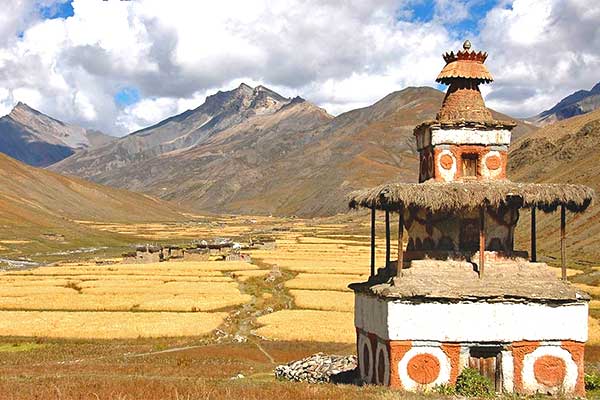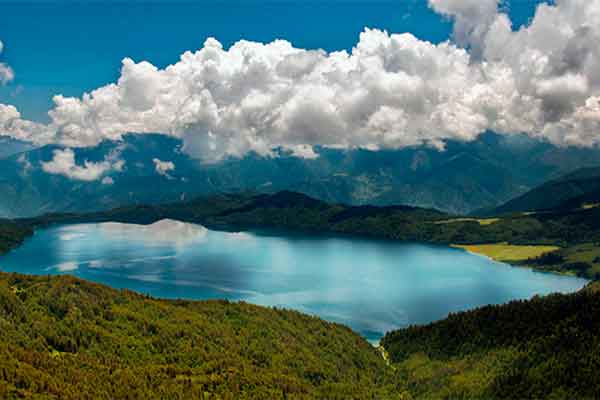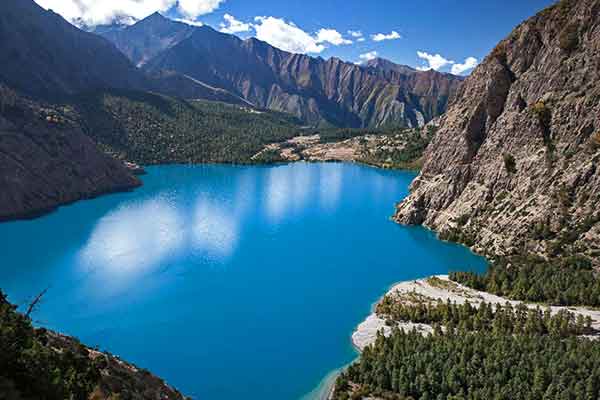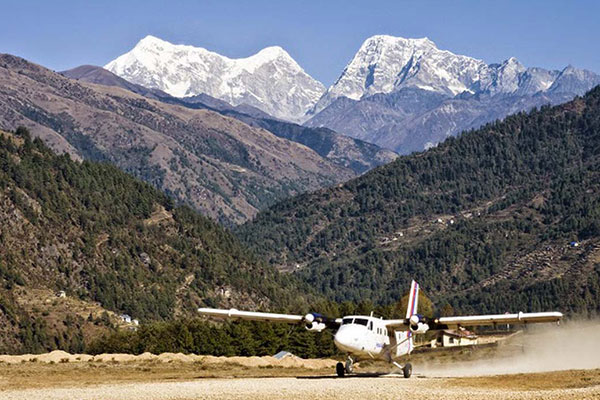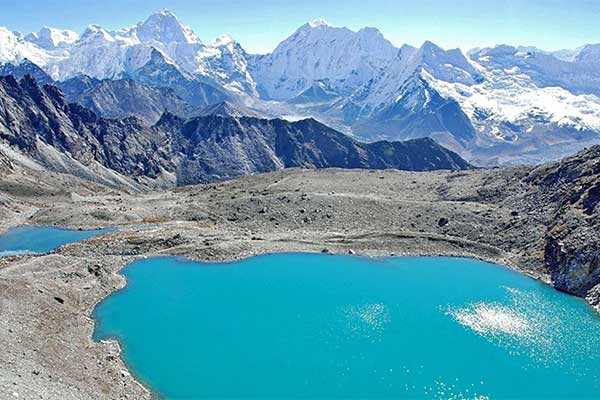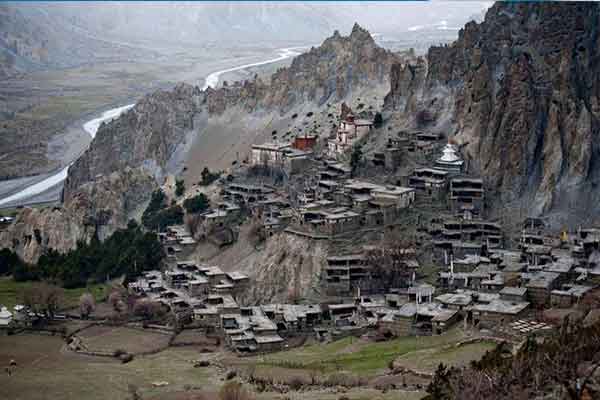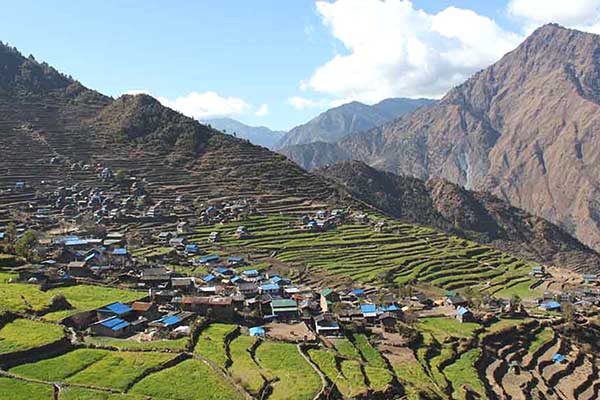Overview
Duration :
18 Days
Secondary Activity:
Nature and Culture
Max altitude :
5,190m/17,023ft
Transportation:
Private Vehicle and Domestic Flight
Trip ends in:
Kathmandu
Accomodation:
Hotel and Tent Camp
Primary activity:
Trekking and Hiking
Group Size:
Min. 2 pax
Country:
Nepal
Trip starts from:
Kathmandu
Diffficulty:
Strenuous
Meals:
Nepali and Continental
Best Season:
Autumn and Spring
Trip route:
Kathmandu-Nepalgunj -Jhupal-Dunai-Tarakot-Laini- Nawarpani-Tara Do Tarap-Numa La pass-Pelung Tang-Baga La pass-Dajok Tang-Ringmo-Phoksundo Lake-Shyanta-Jhupal-Nepalgunj- Kathmandu
Trip introduction
Lower Dolpo Trek (camping) is a great opportunity to experience off-the-beaten-path adventure in rural areas of western Nepal. Along with insights into traditional pre-Buddhist Bon-Po religion, we will be walking across the national park. That offers excellent views of landscapes, valleys,s, and the nearby Himalayas. From visiting the spectacular deepest lakes to crossing high altitude passes; every adventure is experienced raw in our Lower Dolpo Trek.
Journey: Lower Dolpo Trek
We embark on Lower Dolpo Trek after your arrival and completion of cultural sightseeing around Kathmandu valley. We get the necessary trekking permits and initially, we board a domestic flight from Kathmandu to Nepalgunj. Followed by another flight from Nepalgunj to Jhuphal(Dolpo region). In this way, we start trekking activity passing through Shey Phoksundo National Park before entering beautiful culturally rich lower Dolpo valley.
As we move further, we experience the Tibetan-influenced cultures, traditions, fluttering prayer flags. Acclimatizing at Do Tarap before crossing high altitude pass at an altitude of 5190 meters above sea level. En-route we can also sight the excellent views of snow-capped mountains like Kanjiroba, Dhaulagiri, and other surrounding Himalayan ranges. Soon, we arrive at the deepest Lake of Shey Phoksundo filled with crystal clear blue water reflecting nearby surroundings on its surface that creates a perfect panorama. In this way, we trek to Chepka and Jhupal before flying back to Nepalgunj then Kathmandu on a short domestic flight.
Physical Fitness and Best Season
Lower Dolpo Trek is a challenging camping and homestay trekking adventure off the beaten trails. Therefore, an adequate level of fitness level with a passion for walking and exploring is anticipated. The best seasons for this trek would be during the spring months of March, April, May, and autumn months of September, October, and November. Join this Lower Dolpo Trek with Nepal Mountain Trekkers for professional arrangements; that make your holiday in Nepal a worthwhile experience.
Special Note:
If this itinerary doesn’t suit your requirement or if you want to customize it, please feel free to contact us. This trek could be customized as per your required time frame and budget limits.
Overview
-
Day 1Arrival in Kathmandu (1,300m/4,264ft):
-
Day 2Kathmandu: Sightseeing and Trek Preparation:
-
Day 3Fly from Kathmandu to Nepalgunj (150m/490ft): 1 hour:
-
Day 4Fly from Nepalgunj to Jhupal (Dolpo) (2,320m/7,610ft) and trek to Dunai (2,850m/9,348ft): 45 mins flight, 2-3 hours trek:
-
Day 5Dunai to Tarakot (2,543m/8,341ft): 5-6 hours:
-
Day 6Tarakot to Laini (3,160 m/10,365 ft): 6-7 hours:
-
Day 7Laini to Nawarpani (3,545m/11,627 ft): 5-6 hours:
-
Day 8Nawarpani to Do Tarap (4,090m/13,415ft): 7-8 hours:
-
Day 9Rest Day at Do Tarap for acclimatization:
-
Day 10Trek to Numa La Base Camp (4,440m/14,563ft): 6-7 hours walk:
-
Day 11Cross Numa La pass (5,190m/17,023ft), camp at Pelung Tang (4,465m/14,645 ft): 6-7 hours:
-
Day 12Cross Baga La pass (5,070m/16,630ft), trek to Dajok Tang (4,080m/13,382ft): 6 hours:
-
Day 13Dajok Tang to Ringmo (3,600m/11,808ft): 3-4 hours:
-
Day 14Hike to Phoksundo Lake:
-
Day 15Phoksundo Lake to Shyanta (2,520m/8,265 ft): 5-6 hours walk:
-
Day 16Shyanta to Jhupal (2,320m/7,610ft):
-
Day 17Fly to Nepalgunj (150m/490 ft) fly to Kathmandu:
-
Day 18Departure Day:
Detail Itinerary
Day 1 : Arrival in Kathmandu (1,300m/4,264ft)::
After your arrival at the Tribhuvan International Airport, a representative of Nepal Mountain Trekkers will be there at the airport to welcome you and transfer you to your respective hotel. There you can relax and prepare yourself for the next day as we will be going on a sightseeing tour of the Valley. Stay overnight in Kathmandu.
Day 2 : Kathmandu: Sightseeing and Trek Preparation::
Today we go for a sightseeing tour around different four UNESCO World Heritage Sites in Kathmandu. Patan Durbar Square holds the palaces of the medieval Kings; Pashupatinath houses a sacred Shiva lingam or the phallic symbol of Lord Shiva. The Aryaghat alongside Pashupati and on the banks of the Bagmati River is a famous funeral site for the Hindus. The Buddhist shrine of Boudhanath is one of the largest stupas in the world, and one of the holiest Buddhist pilgrimage. Swayambhu meaning “the self-existent” is popular among foreigners as the Monkey Temple owing to the large monkey population residing in the area. Stay overnight in Kathmandu.
Day 3 : Fly from Kathmandu to Nepalgunj (150m/490ft): 1 hour::
We take an hour’s flight from Kathmandu to Nepalgunj in Western Nepal. Nepalgunj which is a border town near the Nepal-India border is the gateway to the Simikot of Humla. The town itself is an interesting Terai town of Nepal with influences from both the Nepal hills and plains well as local Hindu & Muslim cultures. Some sightseeing places in Nepalgunj include Mini Zoo, Muslim bazaar, or if possible and interested take a walk into nearby villages. We have to also make preparation for tomorrow’s flight to Jhupal. Stay overnight in Nepalgunj.
Day 4 : Fly from Nepalgunj to Jhupal (Dolpo) (2,320m/7,610ft) and trek to Dunai (2,850m/9,348ft): 45 mins flight, 2-3 hours trek::
Now on this day after having breakfast, we take a flight of around 45 minutes over the high mountains. With this flight, you get to Jhupal which lies over the Himalayan foothills, with views of Annapurna and Dhaulagiri peaks to the north. Our first-day adventure begins through the terraced fields to the Bheri River along the narrow gorge taking 2-3 hours to camp at Dunai. Dunai is the administrative headquarter of the Dolpo region. Explore Dunai in the evening. Stay overnight at Dunai.
Day 5 : Dunai to Tarakot (2,543m/8,341ft): 5-6 hours::
After breakfast, we start our trek which continues along the south bank of the river heading upstream on a good trail with deep gorges, hanging bridges, and isolated villages. A tremendous gorge with pine trees and an ingenious path built about seven meters above the river. The colorful terraced field of Tarakot greets us. Tarakot is an old fortress town built by the local people as Dzong or fort. The village stands on a hillock to the south of Bheri River at one time supervised collection of tolls for the trading caravans. Stay overnight at Tarakot.
Day 6 : Tarakot to Laini (3,160 m/10,365 ft): 6-7 hours::
After breakfast, we continue with our walk to follow the Tarap Chu River upstream, crossing it by a bridge and we again have to cross the same river. The famed Sandul Gompa lies farther east from Tarakot and at the junction of Barbung Khola and Tarup Chu River. The path leads through the farm terraces and rural villages. After a few ups and downs, we finally descend to reach our overnight camp at Laini.
Day 7 : Laini to Nawarpani (3,545m/11,627 ft): 5-6 hours::
After breakfast we continue walking up to the gorge of the Tarap River, rising high above on a trail built out from steep slopes. Now we descend to Chyugur Khola. Sometimes the path vanishes for a while, making our own path across stone slabs fitted on logs in between the walls which act as a bridge. Stay overnight at Nawarpani.
Day 8 : Nawarpani to Do Tarap (4,090m/13,415ft): 7-8 hours::
Our morning walk begins after breakfast with a gradual incline up leading us to Kamattarka at the confluence of the Tarap Chu and Lang Khola, a stream flowing from the east. After few hours of good morning walk and leaving the narrow gorge the path leads us just above tree lines of juniper bush and wild rose, typical of dry inner Himalayan valleys. Another 3 hour or more walk brings us to the village of Dho Tarap surrounded by an irregular stone wall. In this Valley, both Bon Po and Chaiba sects reside together. Tarap is also inhabited by a few Tibetans and mostly Magars who have lived here for many generations. Stay overnight at Do Tarap.
Day 9 : Rest Day at Do Tarap for acclimatization::
We spend a rest day in Do Tarap as we gradually get used to the altitude there. This is the time to visit monasteries and enjoy the breathtaking views. Make friends with the locals who have hardly seen westerners. The Dolpo people wear homespun clothing that is sometimes dyed maroon and they favor Tibetan style Somba or Dhocha (boots with upturned toes) for footwear. Both men and women often wear religious amulets and strings of coral, amber, and turquoise. The people of this region are both Bon Po and Nyingmapa of the Buddhist sect. The Buddhist Gompa is nearby to the camp while the Bon Gompa (pre-Buddhist) is about half an hour’s walk. Stay overnight at Do Tarap.
Day 10 : Trek to Numa La Base Camp (4,440m/14,563ft): 6-7 hours walk::
After a wonderful time at Do Tarap, our journey continues towards upper Tarap valley, the walk follows in this plain valley with a lush patch of verdant grass on both sides of the river, which is completely different from other parts of inner Dolpo. After visiting this village our walk continues further up this valley climbing up the rough track for almost another three hours to reach our overnight camp beneath the Numa-la.
Day 11 : Cross Numa La pass (5,190m/17,023ft), camp at Pelung Tang (4,465m/14,645 ft): 6-7 hours::
This is one of the long and difficult days during the trek. After breakfast our journey continues as we cross Numa La pass at 5,190m, the track leads to a steep climb all the way to the top ridge of Numa la with great views of the surrounding landscapes. There’s an incredible panoramic view of the barren mountains of Dolpo up to the Dhaulagiri (8167m). After getting to the top of Numa La we begin to descend to camp at Pelung Tang. Stay overnight at Pelung Tang.
Day 12 : Cross Baga La pass (5,070m/16,630ft), trek to Dajok Tang (4,080m/13,382ft): 6 hours::
After breakfast our morning trek starts with a steep climb to reach the ridge top of Baga-la at 5,070m, which offers fantastic views of the surrounding landscapes and of the distant snow-capped peaks of Kanjirowa Himal range, after a glorious moment at the pass, almost three hours of the downhill walk takes to the Dajok Tang for overnight stay.
Day 13 : Dajok Tang to Ringmo (3,600m/11,808ft): 3-4 hours::
After breakfast, our morning trek starts through the pine forest, on leaving the forest behind the country, and the vegetation changes for pasture field and alpine shrubs most of the way to Ringmo while on the gradual slopes with few ups and downs we reach our final destination at Ringmo. Stay overnight at Ringmo.
Day 14 : Hike to Phoksundo Lake::
Today we rest and explore Phoksundo Lake. And of course, we sit right on the shore of the spectacular Phoksundo Lake; remember the harrowing scene in ‘Himalaya’ when Thinley’s yak caravan attempted the ‘Devil’s Trail’. Yak caravans will be heading in and out of Ringmo on their way north towards the border of Tibet, and our most northerly destinations, Saldang and Thinje. This is a great day to explore the lake areas and the crystal serene Lake of Phoksundo with great views. Stay overnight at camp in Phoksundo.
Day 15 : Phoksundo Lake to Shyanta (2,520m/8,265 ft): 5-6 hours walk::
Trek downhill to Chepka. From Chepka the trail follows the massive overhanging rock. We can find many important medicinal minerals which are believed to cure almost anything in this area. The route then passes through the villages, before climbing to Shyanta. Stay overnight at Shyanta.
Day 16 : Shyanta to Jhupal (2,320m/7,610ft)::
Following the trail gently sloping upwards, we march towards Jhupal via Sulighat. We meet tall birch trees on our way. From atop the ridge, we can have the most spectacular views of the mountain and Jhupal below. Utmost caution is required while trekking along this trail. After reaching Jhupal, we can spend our afternoon exploring the busy market town or simply pursuing whatever we feel like. Stay overnight at Jhupal.
Day 17 : Fly to Nepalgunj (150m/490 ft) fly to Kathmandu::
We take a flight from Jhupal to Nepalgunj. On reaching Nepalgunj, we return to Kathmandu on the next available flight. Upon arrival in Kathmandu, you will be transferred to your hotel. There is nothing to do but trade emails with travel companions and organize the photos. You can spend the evening leisurely, perhaps catch up on some last-minute shopping and celebrate dinner together with Nepal Mountain Trekkers. Stay overnight in Kathmandu.
Day 18 : Departure Day::
Here you come to the end of a memorable trekking experience. Depending on the time available you may explore the local market for shopping the souvenir else, we shall proceed straight away to the Tribhuwan International Airport (TIA) for your departure to the respective destinations. Hope we shall meet again and make another visit of yours a truly amazing one. See you again!
Price Includes
- Airport Pick-up and drop service
- 3 nights Hotel in Kathmandu(Hotel Green Horizon or similar standard)
- All accommodation during the trek in the best hotels/tea-houses in the area (differing according to the price you wish to spend)
- Sanitation: The accommodation we provide will be neat and clean with warm-hospitality and quality services.
- Single Accommodation: You won’t have to share your accommodation with anyone else so that your privacy is protected.
- All foods during the trek: Breakfast, Lunch, and Dinner; any items on the menu as much as you wish to consume.
- We provide hygienic and safe meals to re-energize you.
- We request you not to waste your meals for it is difficult to transport food in the rural area.
- You are not allowed to share your meals with anyone else from another group.
- Domestic flights and all required land transportation
- All camping equipment(Dinning Tent, Kitchen Tent, Toilet Tent, Two men Dome Tent, Chairs, Toilet Pan, Tables)
- Professional and Highly experienced English-speaking Trekking Guide licensed by the Government. Including their lodging and food.
- Local Staffs: Our guides are locals of the region which ensures that you will surely get to explore a bit more during the trek than with any other guides.
- Experienced: With the experience of more than a decade of working in this field, our trekking guides possess excellent knowledge on briefing during the trek as well as they are experts in handling all kind of critical situations that might occur during the trek.
- Insurance: Nepal Mountain Trekkers have an insurance policy for all our trekking staff.
- Porters (1 porter for 2 trekkers with a max load of 25 KG). Including their lodging and food.
- Local Staffs: The porters we hire belong to the same region where we trek in order to provide employment opportunities to the locals as well as to make you explore every prospect of the region.
- Trekking permits: TIMS card, and National Parks Entrance Fees
- First aid medical box
- Four seasonal sleeping bags, down jacket, Nepal Mountain Trekkers duffer bag, t-shirt, and trekking map (Note: down jacket and sleeping bag are to be returned after trip completion)
- T-shirt, Duffel Bag, and Trekking Map with Company Logo
- Rescue Arrangement Service
- 13% VAT and 10% company service charge
- Farewell Dinner
Price Excludes
- Nepal Entry Visa fee (Visa Information)
- International airfare and excess baggage charge
- Extra night accommodation in Kathmandu because of early arrival, late departure, early return from mountain (due to any reason) than the scheduled itinerary
- Lunch and evening meals in Kathmandu (and also in the case of early return from mountain than the scheduled itinerary)
- Travel and rescue insurance
- Personal expenses (phone calls, laundry, bar bills, battery recharge, extra porters, bottle or boiled water, shower etc)
- Tips for guides and porters
Equipments
 Head
Head
- Sun hat or scarf
- Light balaclava or warm fleece hat
- Sunglasses
- Head Torch
 Upper Body
Upper Body
- Cotton t-shirts or thermals
- Fleece jacket
- Waterproof jacket
- Down jacket
 Lower Body
Lower Body
- Lightweight cotton pants (long)
- Waterproof pants
 Feet
Feet
- Thin inner socks
- Thick, warm wool hiking socks
- Comfortable hiking boots
 Hands
Hands
- Gloves
- Creams
 Accessories
Accessories
- Sleeping bag rated to -10°C +
- Trekking bag (Rucksack)
- Duffel bag
- Large plastic bags (for keeping items dry inside trek bag)
- Trekking poles (optional, recommended)
- Water bottle or camel bag
- Toiletries
Related Trips
You will also like …
